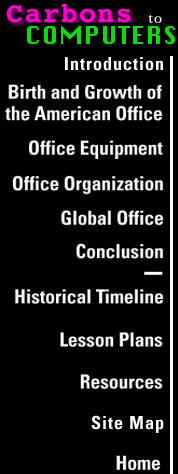
Facsimile (Fax)
Facsimile is today's fastest-growing area of office automation
and business communication. To the nontechnical observer, the fax machine
seems to send a  photocopy to another fax machine over the telephone lines: you
dial a number, place the pages you want to send in the machine, press "start,"
and off they go, at about a minute a page.
photocopy to another fax machine over the telephone lines: you
dial a number, place the pages you want to send in the machine, press "start,"
and off they go, at about a minute a page.
Long before photocopying machines, the facsimile machine was invented in 1842 by Alexander Bain, a Scottish clockmaker, who used clock mechanisms to transfer an image from one sheet of electrically conductive paper to another. Bain patented the "automatic electrochemical recording telegraph" in 1843.
Various machines using Bain's technology have been in use for many years. In 1934 the Associated Press began to use "wirephoto" to transmit photographs. But then television brought a news revolution--people could see live or same-day footage of events rather than one or two photographs.
Only today has "fax" become a household word. The current facsimile revolution has come about because of digital technology (the same technology that lets us play video games), which has increased the speed, compactness, and reliability of the machines, as well as brought down prices. And, like Sholes's typewriter, this technology has found its real market in the business world, where efficiency and fast communication have been necessary since the days of the railroads. Fax machines make it possible to send anything that can be printed on a page to anywhere in the world in not much more time than it would take to hand the page to someone across the top of your desk.